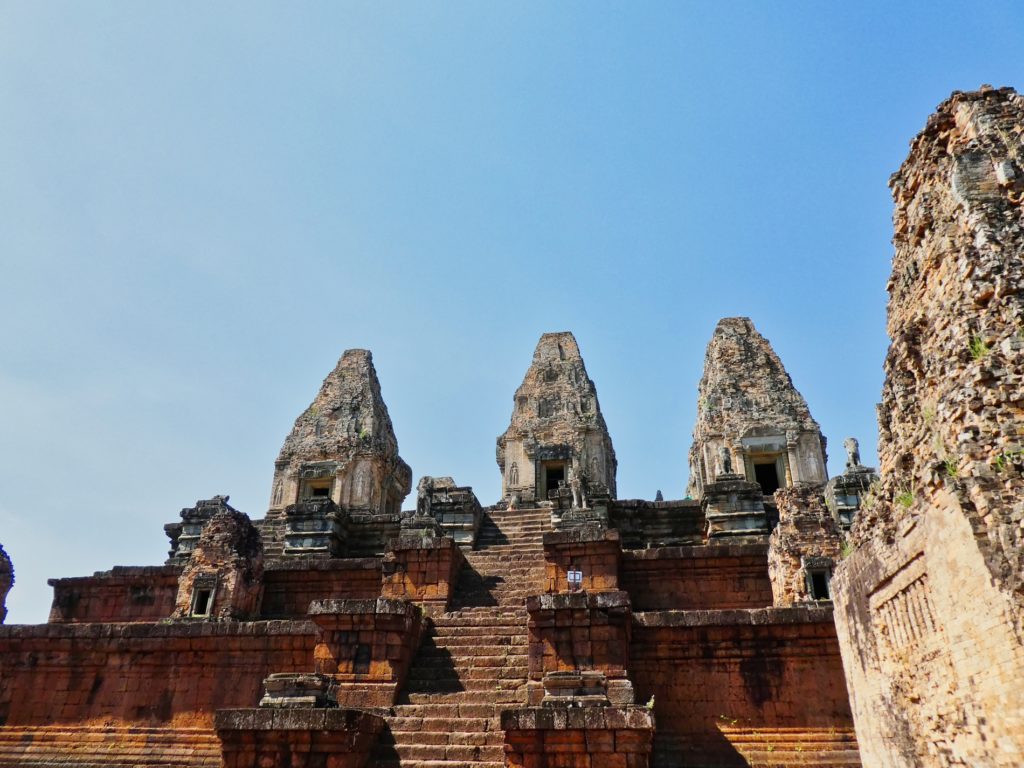Prei Rup – a temple with an exhausting way up
The temple complex Prei Rup is located not far from Siem Reap and belongs to the “big round” of former Khmer temples.

The ascent to the temple Prei Rup is arduous
The temple was built under the reign of King Rajendravarman II in 961, who, having already had the Eastern Mebon built, set himself a monument by constructing the building as a state temple of his reign, as the Prei Rup temple complex is considered the most important Angkor temple of the 10th century and is still one of the most impressive structures in the entire region.
It was also King Rajendravarman II who moved the capital of the Khmer Empire from Koh Ker to Angkor during his reign, which was partly the reason why so many magnificent buildings can be found in the region today (although it should be said, of course, that the other temple complexes were each built by mostly one of the subsequent rulers, who in turn have a share in the unique collection of architecturally valuable buildings that can now be found in Angkor). Prei Rup is a Hindu temple dedicated to the deity Shiva.
The structure itself was built of sandstone, volcanic stone and laterite, which meant that the reliefs that Prei Rup may once have had were largely abraded by the weather and are no longer or hardly traceable today. What has been preserved, however, is all the more remarkable and gives an exciting insight into the representations of that time. Much better known, however, is the fact how much the architectural style of Prei Rup has influenced subsequent buildings – and therefore shares its name with the name of the art movement of the entire era, namely the “Prei Rup style”. “Prei Rup” means something like “turning the body”, which is probably-so researchers assume today-connected with a Hindu ritual.
The architectural style of Prei Rup also inspired the construction of the temple complexes of Ta Keo and Angkor Wat, which were also built as temple mountains: a reference to Mount Meru, the world mountain that stands at the center of the universe of Hindu, Buddhist and Jain mythology and has five peaks: Thus, five prasat are also found here to symbolize them.
The four sides of the pyramid structure are precisely aligned according to the four cardinal points.
Among tourists, the site is a popular destination (especially in combination with a visit to the other temples in the region), probably because, in addition to the extraordinary architecture, a breathtaking view awaits those visitors who dare to make their way to the top of the pyramid structure, from where they can see the entire surrounding fields, pastures and forests.